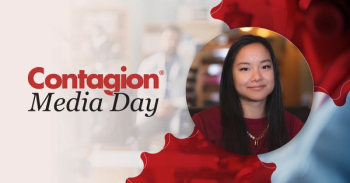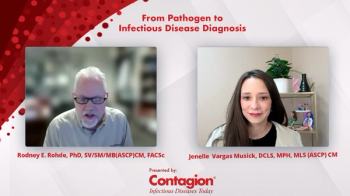
Strategies for Infectious Disease Practice on the Frontlines of the Opioid Crisis
A new article in Open Forum Infectious Diseases outlines practical strategies for treating opioid use disorder in the context of associated infectious diseases.
Given the relationship of the ongoing United States opioid crisis to acute injection-related infections, many infectious disease physicians are finding themselves as the first point of medical contact for many patients with opioid use disorder (OUD). This clinical situation, while potentially challenging, may be an opportunity to engage patients who seldom make contact with health care providers.
In order to assist these clinicians, a group of authors have published a new article in
Screening for OUD
Authors of the article point to the
The NM-ASSIST, which asks patients about their lifetime drug use, is in part valuable for identifying stimulant use, which is increasingly co-morbid with opioid use disorder.
Authors also point to the Rapid Opioid Dependence Screen, an 8-question assessment concerned with identifying opioid use disorder. For individuals that screen positive, the authors recommended consulting Diagnostic and Statistical Manual (DSM)-5 criteria.
Harm Reduction Strategies
After establishing diagnostic methods, the article provides the risks associated with particular methods of injection, as well as a variety of harm reduction strategies clinicians can recommend to their patients.
These strategies include counseling patients on alcohol swabbing and general hygiene practices, as well as adapting strategy based on the local availability of proven harm reduction resources such as needle exchange programs. They also pointed to sexual risk reduction practices.
“Risk of sexual behaviors such as exchanging sex for drugs and/or money are more common in substance using populations and thus barrier protection use should be recommended and pre-exposure prophylaxis (PrEP) should be offered to those who test negative for HIV,” the authors write.
Recommended Treatment
Initial treatment for opioid use disorder is recommended to take place in hospital, in order to relieve discomfort patients experience. However, such treatment is ideally followed up on when patients are discharged into the community.
There is no consensus guideline on the preferred form of FDA-approved treatment, and authors note that there is evidence for both agonist-based treatment (buprenorphine, methadone) and non-agonist (extended release naltrexone) based therapy. The former 2 are suggested for alleviating acute withdrawal symptoms.
Buprenorphine, an agonist-based treatment, has strong evidence for mortality reduction and is easy to prescribe for providers who obtain a Drug Enforcement Administration exemption waiver.
Transition to Outpatient Care
Upon transition to outpatient care, continued addiction management by infectious diseases providers can take place while patients are linked to durable community services, in ways resembling chronic management of HIV.
Authors emphasize that infectious diseases physicians are in a unique position to treat opioid use disorder, and that the opportunity should not be missed. Medications like methadone, buprenorphine, and naltrexone reduce illicit opioid use and overdoses, but they also have an impact on other areas of concern for infectious diseases physicians.
Treatment has been found to reduce injection drug use risk behaviors, reduce acquisition of hepatitis C virus (HCV) and HIV, and improve adherence to treatment for both HCV and HIV if they are acquired. Therefore, in addition to the clear social and individual benefit of treating opioid use disorder, increased attention to opioid use disorder may provide infectious diseases physicians a bridge to addressing interrelated areas of concern for the field.
“Ultimately if the opioid epidemic is to be overcome, every medical specialty will need to find its role in mitigating its effects. ID [infectious diseases] has always been an exceptionally dynamic specialty that has recognized the social determinants or associated conditions in our field and evolved to address them,” authors write.
Newsletter
Stay ahead of emerging infectious disease threats with expert insights and breaking research. Subscribe now to get updates delivered straight to your inbox.






















































































































































































































































































































